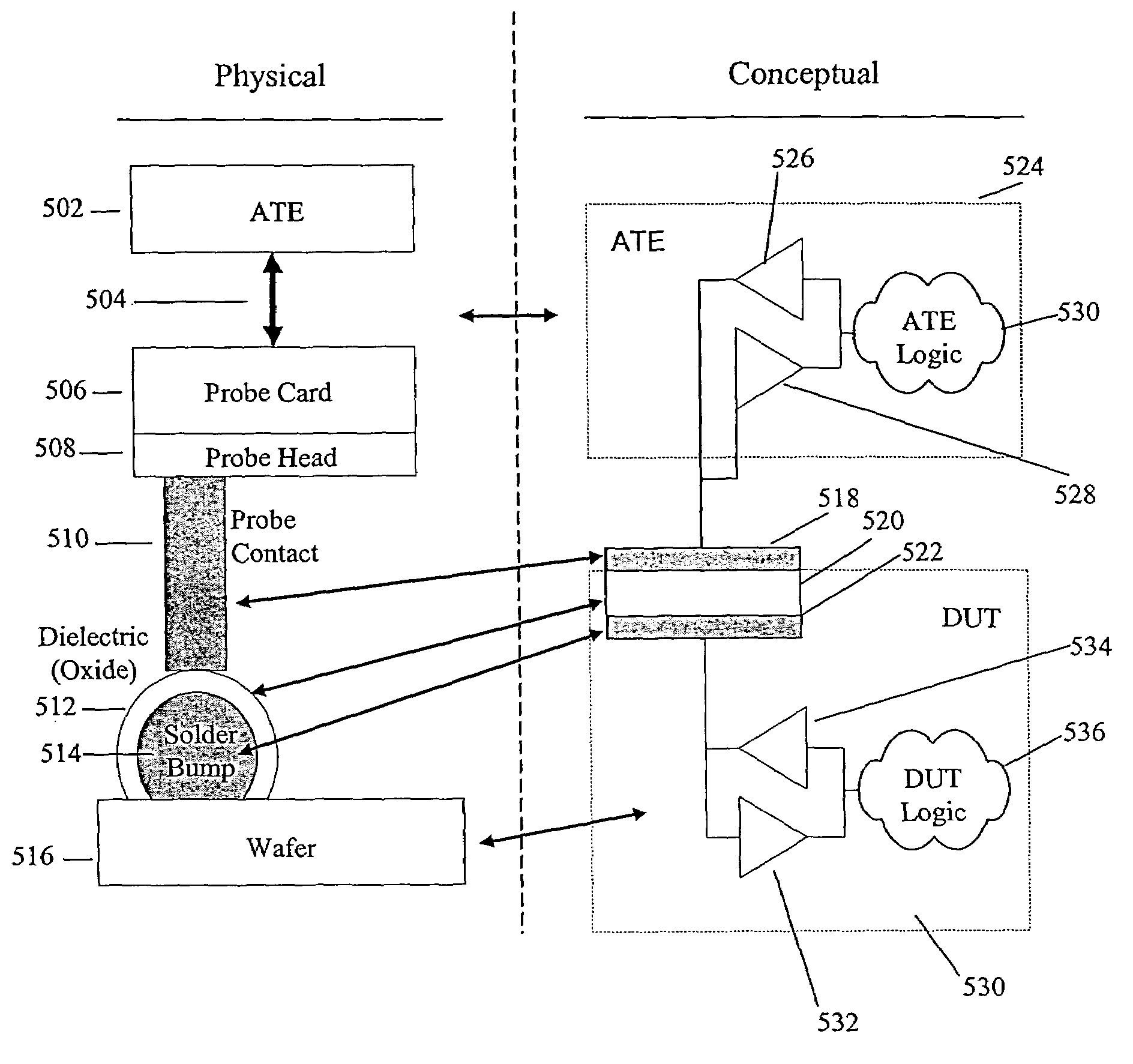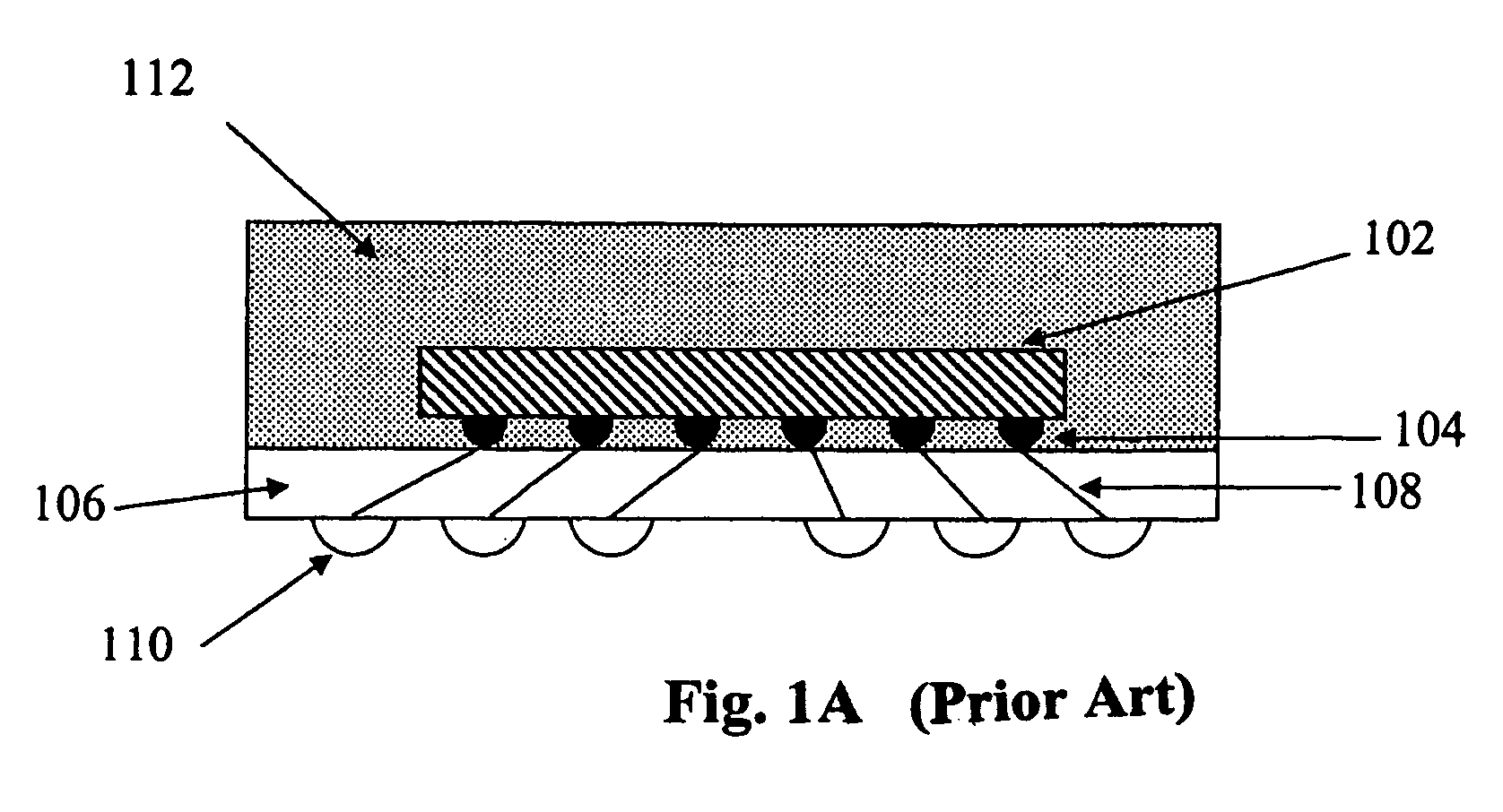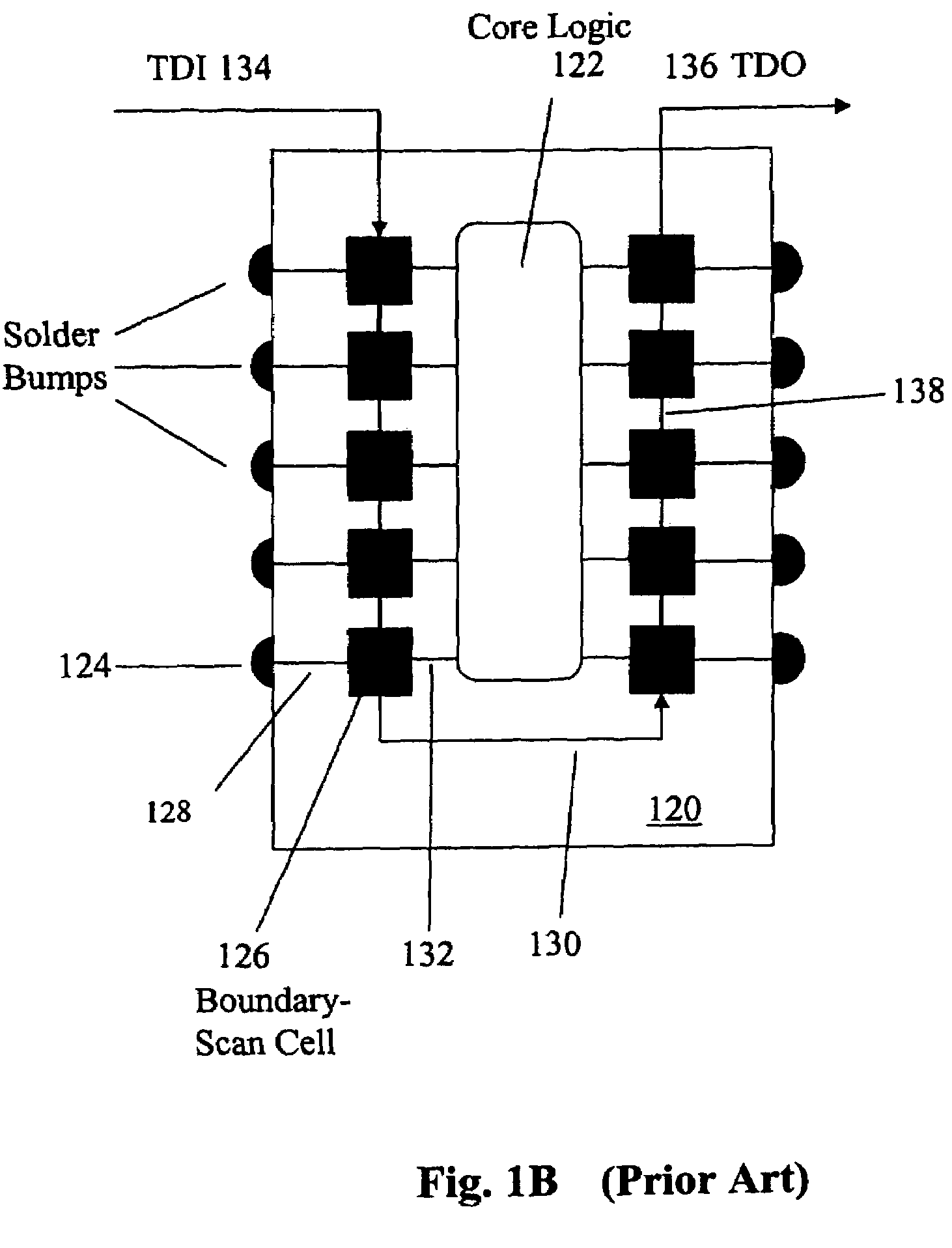Method of maintaining signal integrity across a capacitive coupled solder bump
a capacitive coupled and solder bump technology, applied in the direction of electronic circuit testing, measurement devices, instruments, etc., can solve the problems of no way to test or even use the dut, formation or collection of resistive and capacitive substances, such as oxides, on the surface of electrical contacts
- Summary
- Abstract
- Description
- Claims
- Application Information
AI Technical Summary
Benefits of technology
Problems solved by technology
Method used
Image
Examples
example
[0086]The following tables show examples of various test parameters and pass / fail results for sample DUTs. Tables 1 and 2 are examples of the application of relationships (5) and (6), respectively. Table 1 illustrates examples wherein the ATE is the driver and a DUT is the load, and Table 2 illustrates examples of the reverse path. The epsilon used is an approximate one assuming lead-oxide, and includes both the permittivity constant (∈0) and the permittivity multiplier (∈) for lead oxide. CI is calculated using relationship (7), with oxide thickness as the distance (d) between the two conducting plates. Contact areas are typical for solder bumps contacted by flat-tipped probe contacts.
[0087]
TABLE 1OxideVOHATE >VOHATEVIHDUTCDUTEpsilonContactthicknessCIVIHDUT *(V)(V)(pF)(F / m)area (m2)(m)(pF)(1 + CDUT / CI)13.31.7102.2e-101.26e-93e-08 9.3Fail23.71.7102.2e-101.26e-93e-08 9.3Pass33.31.4102.2e-102.83e-93e-0820.9Pass
[0088]
TABLE 2OxideVOHDUT >VOHDUTVIHATECATEEpsilonContactthicknessCIVIHATE *...
PUM
 Login to View More
Login to View More Abstract
Description
Claims
Application Information
 Login to View More
Login to View More - R&D
- Intellectual Property
- Life Sciences
- Materials
- Tech Scout
- Unparalleled Data Quality
- Higher Quality Content
- 60% Fewer Hallucinations
Browse by: Latest US Patents, China's latest patents, Technical Efficacy Thesaurus, Application Domain, Technology Topic, Popular Technical Reports.
© 2025 PatSnap. All rights reserved.Legal|Privacy policy|Modern Slavery Act Transparency Statement|Sitemap|About US| Contact US: help@patsnap.com



